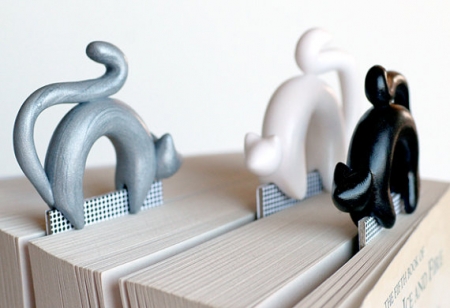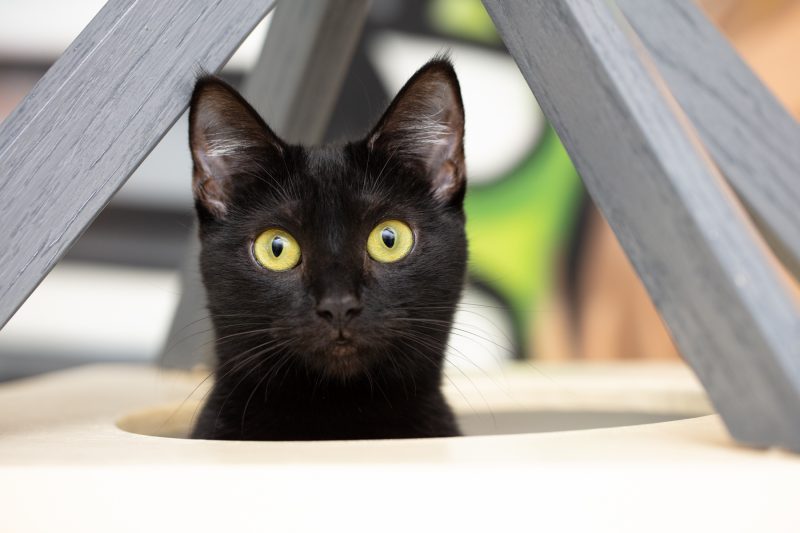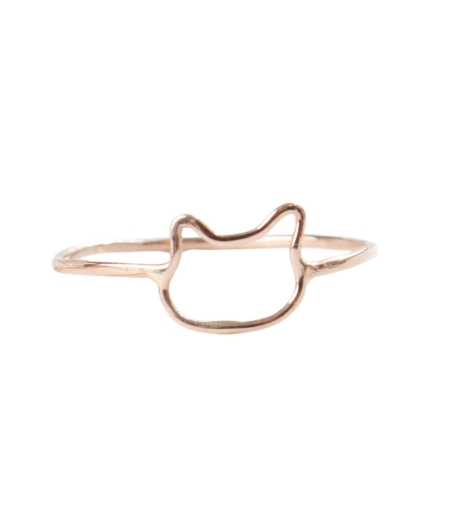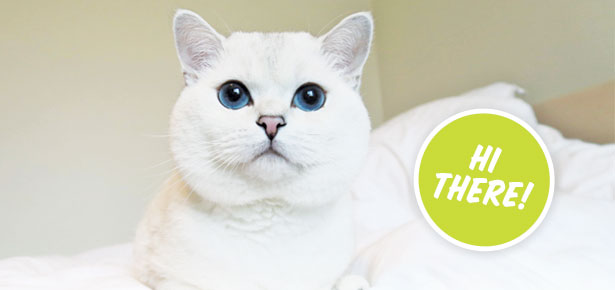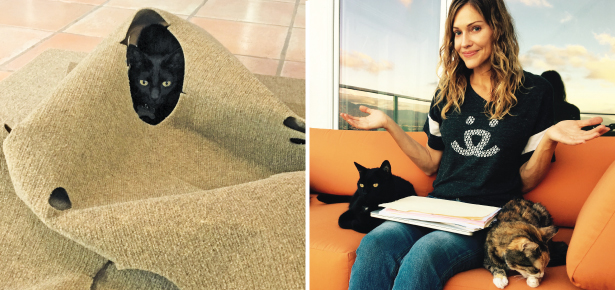

Tricia Helfer Knows Cats—and she wants to help you understand them too
Tricia Helfer—actress, supermodel, and serious cat person—answers your most pressing cat questions
Q: My cat is super affectionate with my partner and me, but whenever someone comes over, he runs straight under the bed and doesn’t come out until they’re gone. Is there anything I can do to help him feel more comfortable and be more social with new people around?
Some cats are just wired to be warier of strangers than others. I have a couple cats that my friends joke don’t actually exist. Make sure you don’t pressure your cats. Don’t, for example, keep going back to the bedroom and pulling them out into the living room with everyone. With friends that visit often, you can have your friend bring your cat’s food bowl in at dinnertime and put it under the bed. With luck, the cat will come to associate the friend with being “safe.” You can also try luring the cat out with a feather toy after the people have been over for a while. If your cat does decide to play, you can have your friend try using the toy and see if the cat continues playing. But if there’s a large group of people or anyone with a big booming voice, the chances of your cat relaxing enough to come out are slim. Don’t get annoyed with the cat—it’s just his safety mechanism. Don’t push, just let him venture out at his pace.

As long as you’ve ruled out that a medical issue is not causing the weight gain, there are a few ways to try and help your cat lose a little weight. Firstly, if you leave dry food out all day, instead try leaving it out only around his feeding times, removing it for the better part of the day and picking it up overnight. And leave out only what your cat should be eating and not a whole bowl. Some cats self-moderate and only eat what they need, but some will just keep eating and become overweight.
Also try mixing a bit of water in with your cat’s wet food. This not only helps your cat get sufficient water, which can be an issue for cats, but it also fills them up a little bit more so they eat less.
To get your cat moving, try a dry food feeder toy like the PetSafe SlimCat Interactive Cat Feeder that drops the food out piece by piece when your cat bats it around playing with it. Use this feeder some of the time so your cat is encouraged to play and be active while eating dinner.
And, of course, you should make sure that you are playing with your cat with toys that get him moving, like a feather on a string or a laser pointer toy.
Q: I’m adopting a new cat and I want to be sure that she gets along with my current cat who has been an only cat up until now. Any suggestions for a smooth transition?
Integrating cats can be easy or tricky and everywhere in between—it really just depends on the individual cats. But seeing that your current cat has only ever been an “only cat,” chances are that your integration will be on the difficult side. This is not necessarily certain, but do not be surprised if it is. There are certainly a few tricks to help it go more smoothly though! The big thing to remember is that for cats, smell is incredibly important and the sooner they get used to each other’s scent, the less they’ll be threatened by each other.
Those of you with more than one cat may have noticed that if you take one to the vet, the other will often hiss and growl when you get home. This is because the cat who was at the vet has “vet office smells” on him, and the other cat isn’t sure what to make of it, which makes him a little snippy.
Here are a few ways to help them get used to each other’s smell:
Have a separate room set up for your new cat when you bring him home. Provide a kitty bed or a towel for your new cat to lie on. Alternate this bed with one your other cat uses, trading the beds so the cats can get used to each other’s scent in advance of a face to face meeting. If the cats don’t use the beds, you can place it under or beside their food bowls so that they will smell it when they are eating.
You can also temporarily interchange the rooms they are in too. You don’t want to keep your first cat locked up too long when he’s used to the run of the house but you can give him a bit of alone time in the new cat’s room in order to suss out all the new smells. A brief room swap also gives the new cat a chance to roam and check out the new digs on his own. Cats are routine creatures and a change of location can be upsetting for them, so allowing the new cat a bit of time to figure out his surroundings without fear of the other cat present is a good thing.

This whole process might take half a day, or it could take weeks or months. There is no hard or fast rule as to when they’ll get along. The first time I integrated cats, it took four months before I could leave them alone together unsupervised. However, I’ve also had an experience where, after just a few hours, the new cat was part of the group. Remember that the worst thing you can do is to just come in with the new cat and let him loose immediately. That will put both cats on their guard from the beginning.
One last thing—it’s easy to pay a lot of attention to the new cat and slightly ignore the other cat, especially if the new cat is a kitty (aren’t they sooo cute?). Sort of like a toddler when a baby comes home, cats can get jealous. Make sure you’re not ignoring the first cat too much in the beginning.
Join the newsletter and never miss out on cat content again!
"*" indicates required fields
By clicking the arrow, you agree to our web Terms of Use and Privacy & Cookie Policy. Easy unsubscribe links are provided in every email.





